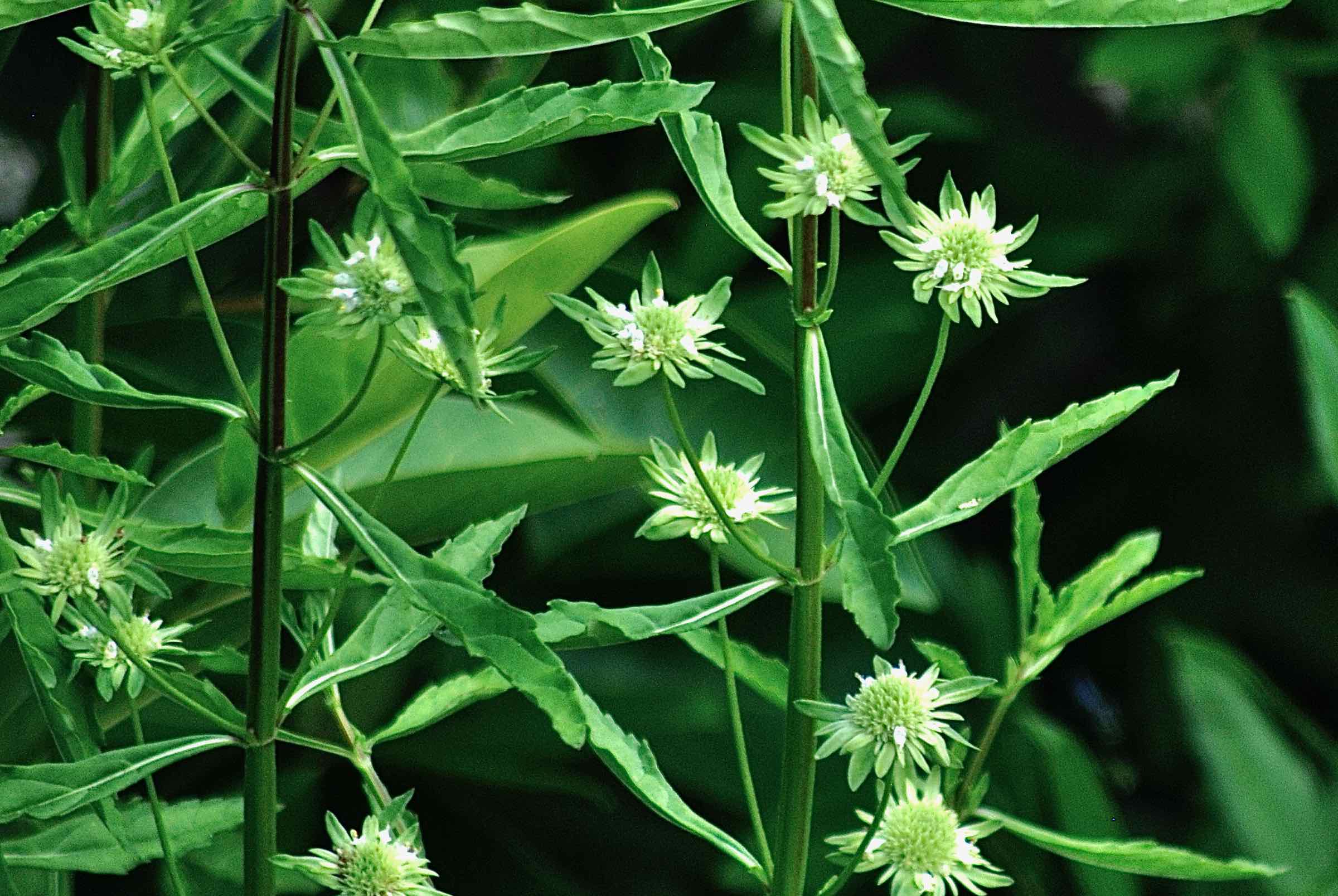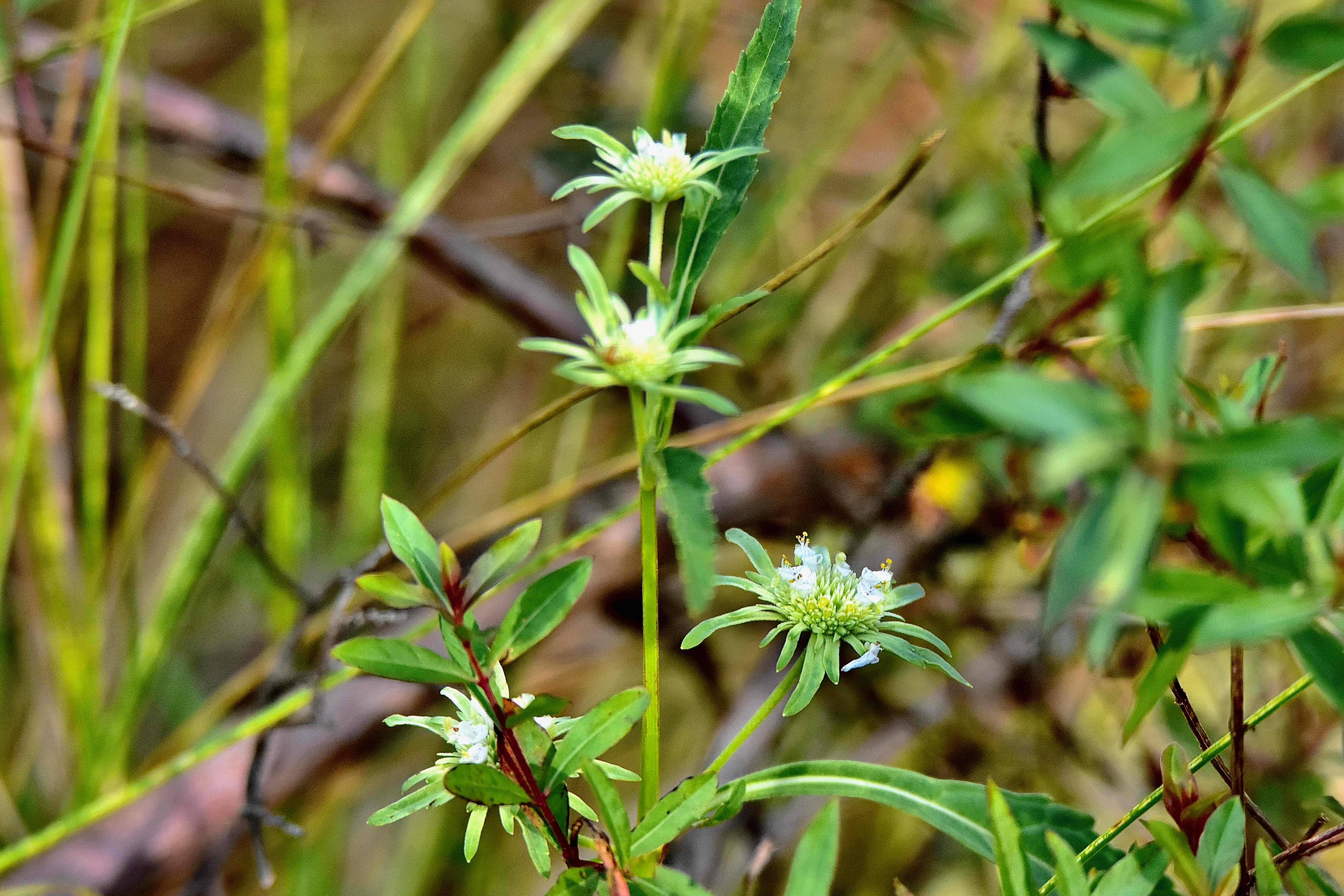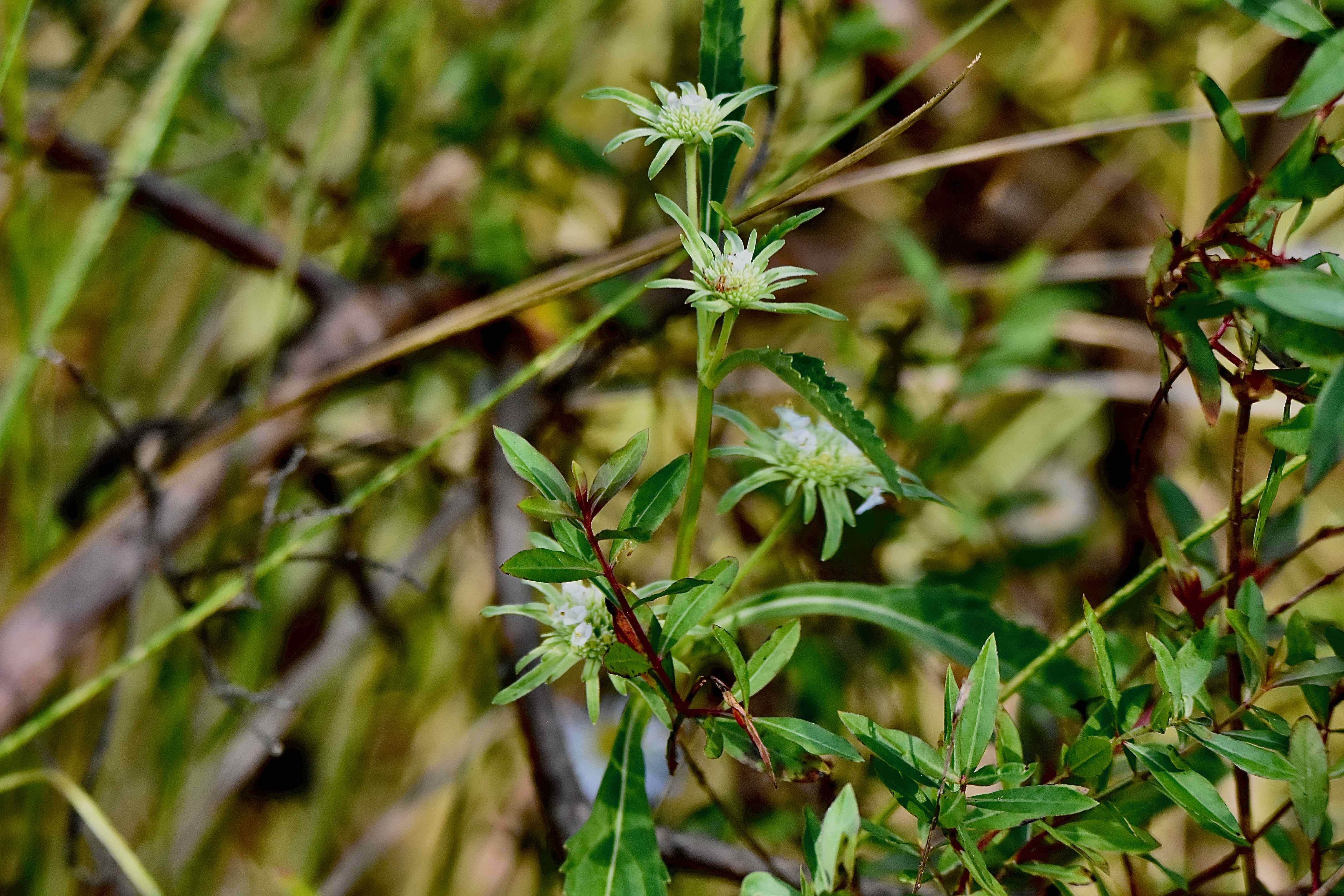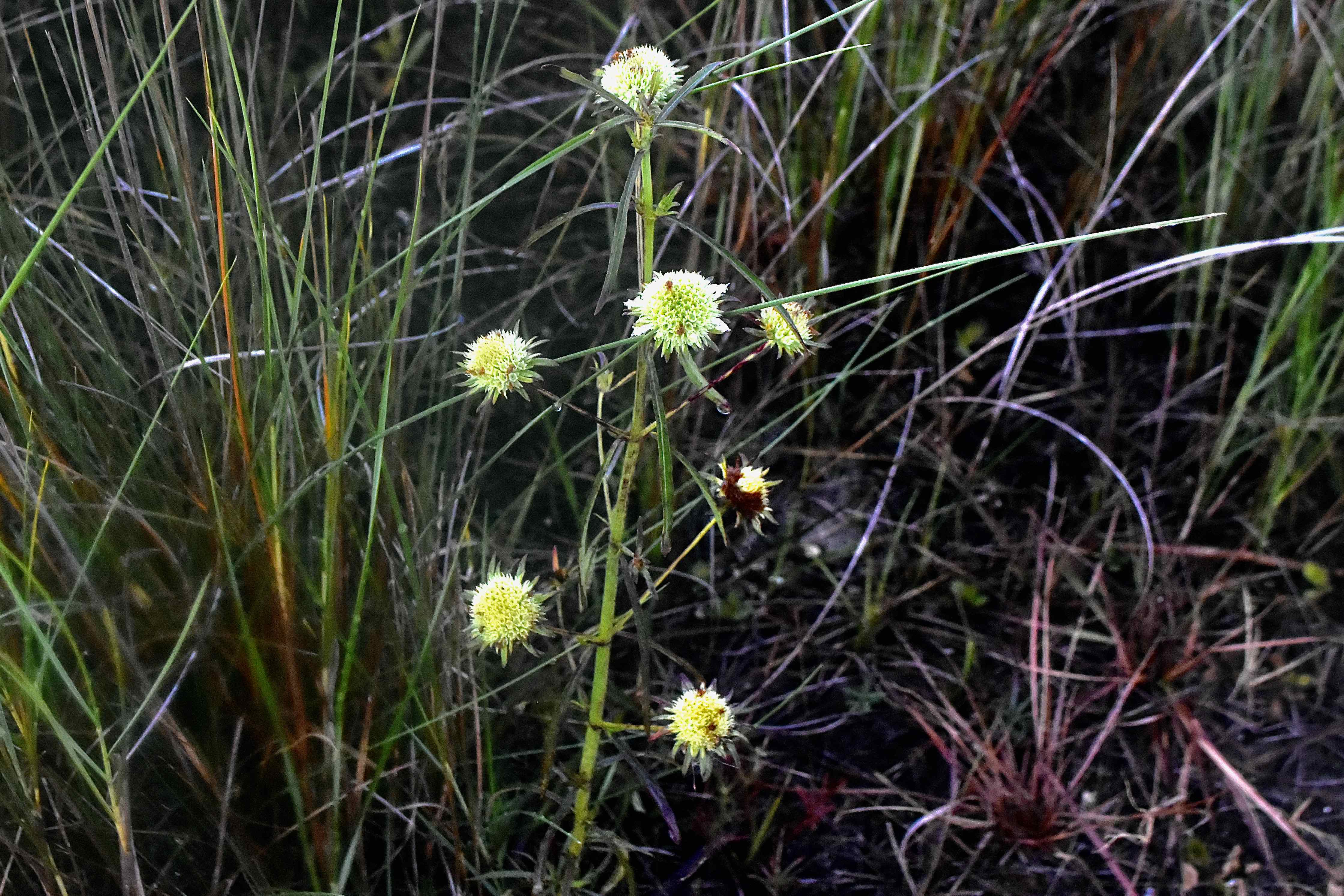
Clustered bushmint, photographed at Shark Valley, Everglades National Park, Miami, Miami-Dade County, in May 2015.
Clustered bushmint, Hyptis alata, likes its feet wet. It’s the kind of plant likely to be spotted along the edges of a pond, a swamp, wet flatwoods, wet prairie or a roadside ditch.
It is a mint taxonomically speaking, but from a culinary standpoint, it's just another weed. A cool-looking weed, mind you but generally inedible.
Clustered bushmint is a Florida native, its presence having been vouchered, or scientifically verified, in 63 of the Sunshine State’s 67 counties. Among the counties where it’s not found: St. Lucie. It’s also absent from the Keys, though found in mainland Monroe.
Clustered bushmint is found throughout the southeastern United States as far north as North Carolina and as far west as Texas, almost entirely on the Atlantic and Gulf coastal plains. It’s also found in parts of the Caribbean, including Cuba and Hispaniola (Haiti and the Dominican Republic), and South America, including Brazil, Paraguay and Argentina.
It is considered potentially invasive outside its natural range, capable of creating thickets and crowding out native plants. It can also render agricultural fields unproductive, but we could not find any reference to clustered bushment growing outside its above-listed natural range.
Combine its distinctive looks and affinity for wet places and clustered bushmint an easy plant to ID.
It is a perennial, a fairly tall plant, standing two to four feet tall, lanky, not branched and not densely covered with leaves. Probably the characteristic of clustered bushmint most notable is its bounty of inflorescences, or flower heads. They’re about an inch across and consist of numerous small, five-lobed flowers, not all of which open at the same time. The flowers are mostly white with pink or purple spots. Green bracts outline the base.

One of the lobes is yellow and sits lower than the other four. It acts as a lever of sorts. When a pollinator lands on the lobe, four stamen raise up and deposit pollen on the feeding critter. Bees, butterflies, wasps and hummingbirds are attracted to clustered bushmint.
Both flowers and leaves are fragrant, giving rise to two other common names, musky mint and musky bushmint. Some describe the plant as intensely fragrant.
In northern parts of its range, clustered bushmint blooms spring into fall. In South Florida, it blooms year-round but peaks May through November.
Leaves can vary in shape from lance-like — long and narrow— to oval, triangular to rhombic (diamond-like). They are serrated along the edges and arranged opposite each other. The leaves becomes become progressively shorter the farther up the stem they grow.
Clustered bushmint takes to full sun or part shade and is moderately drought-tolerant.
It is cultivated and occasionally sold by nurseries that sell Florida native plants; the Institute for Regional Conservation says it’s used in restorations, natural landscapes and in gardens with moist or wet soil.
Like other members of the Hyptis genus, it has been used medicinely, primarily as a tea. It’s said to have antiinflammatory and antioxidant properties. It is a member of Lamiaceae, the mint family, but it is otherwise inedible.
Shark Valley Everglades National Park



